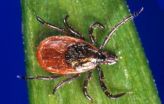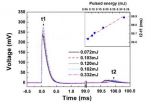(Press-News.org) JACKSONVILLE, Fla. — A genomic analysis of clear cell renal cell carcinoma (ccRCC), the most common form of kidney cancer, from 72 patients has uncovered 31 genes that are key to development, growth and spread of the cancer, say researchers from Mayo Clinic in Florida. Eight of these genes had not been previously linked to kidney cancer, and six other genes were never known to be involved in any form of cancer.
MULTIMEDIA ALERT: Video and audio are available for download on the Mayo Clinic News Network.
Their study, in the journal Oncotarget, is the most extensive analysis to date of gene expression's role in ccRCC tumor growth and metastasis. The ccRCC subtype accounts for 80 percent of all kidney cancer cases.
This study is a thorough analysis, because overexpressed genes were functionally tested in kidney cancer cells to ensure they were important to some aspect of the cancer process, says the study's senior investigator, molecular biologist, John A. Copland, Ph.D.
"The power of this study is that we looked at genes discovered to be over-expressed in patients' tumors and determined their function in kidney cancer, which has not been done on a large scale before," he says. "This is a seminal step in identifying key pathways and molecules involved in kidney cancer so that specific therapies that target these new genes can be developed to treat this cancer."
This kidney cancer is one of the top 10 solid cancers in the U.S. Researchers expect 60,000 new cases to be diagnosed this year, with 13,000 deaths. While the prognosis for kidney cancer that has not spread is good, patients with advanced or metastatic cancer will develop drug resistance. Patients with untreated metastatic disease have a five-year overall survival rate of less than 10 percent.
The research team, which includes Mayo graduate student and lead author Christina von Roemeling, has already published several studies identifying some of the genes they discovered in the genetic analysis. In considering the importance of these discoveries to patients, they decided to publish all the genes at once in Oncotarget.
"We are releasing these discoveries to the scientific community so that a large effort can be mounted to find out more about these genes and how they can be effectively targeted," Dr. Copland says. "We owe patients speedy research that focuses on new treatments to save lives."
Targeted therapies used now to treat kidney cancer are often toxic, he adds.
"The study findings represent a very major advancement in therapeutic target identification for ccRCC and open new avenues for drug discovery and development. Novel therapeutic agents acting on these new targets should bring about a significant improvement in the prognosis of ccRCC patients," says co-author and Mayo oncologist Han Tun, M.D.
The researchers examined an equal number of samples (72) of normal kidney and kidney cancer tissues. They looked at over- and under-expression of RNA from the tissue, as well as protein production because genes express RNA to produce protein. They found almost 6,000 genes that fit that description. They isolated and tested 195 genes that are consistently elevated across patient samples. The researchers then narrowed the "hit" list to 31 after they tested each in living cancer cells to see if these genes contributed to either growth or spread of the tumor.
"We also found genes with other functions that are key to kidney cancer survival, such as inflammation. Another found gene is linked to angiogenesis, the production of new blood vessels to support a tumor. This is a novel discovery," says von Roemeling. "It is particularly important because ccRCC is well known for being a very angiogenic cancer.
"In addition to the potential of these genes and gene products to help us design new drugs, they could also serve as biomarkers for accurate diagnosis," she says. "It really is a treasure trove for future research on kidney cancer."
INFORMATION:
Co-authors include Hege Ekeberg Larsen, B.S., Austin Rohl, B.S., Johnny Wei, B.S., and Laura Marlow, M.S., who are students or technicians from the Copland laboratory; Derek Radisky, Ph.D., of Mayo Clinic; Richard Drake, Ph.D., from the Medical University of South Carolina; Heng Zhu, Ph.D., from Johns Hopkins School of Medicine; and Maciek Sasinowski, M.D., Ph.D., and Heather Sasinowska, Ph.D., of Incogen, Inc.
This study was funded in part from National Institutes of Health / National Cancer Institute grants R01CA104505, R01CA136665, R01CA104505-05S1 and 5R44CA125807; a gift from the David & Lois Stulberg Endowed Fund for Kidney Cancer Research; Mr. and Mrs. Ompal Chauhan Research Fund; Kidney Cancer Research at Mayo Clinic in Florida; James C. and Sarah K. Kennedy Mayo Clinic Research Career Development Award for Clinicians; Scheidel Foundation; Fraternal Order of Eagles Florida State Auxiliary; and a grant for rare cancers from Dr. Ellis and Dona Brunton.
About Mayo Clinic
Recognizing 150 years of serving humanity in 2014, Mayo Clinic is a nonprofit worldwide leader in medical care, research and education for people from all walks of life. For more information, visit 150years.mayoclinic.org, MayoClinic.org or newsnetwork.mayoclinic.org/.
Mayo Clinic researchers reveal treasure trove of genes key to kidney cancer
2014-07-01
ELSE PRESS RELEASES FROM THIS DATE:
Alcohol use disorders linked to decreased 'work trajectory'
2014-07-01
July 1, 2014 - John D. Meyer, MD, MPH, of Icahn-Mount Sinai School of Medicine, New York, and Miriam Mutambudzi, PhD, MPH, of Johns Hopkins School of Medicine, Baltimore, studied the relationship between occupation and AUDs in workers followed up from early adulthood to middle age. The study focused on the "substantive complexity" of work as an indicator of work trajectory—whether individuals were progressing in their careers in terms of factors such as decision latitude and expanded work abilities.
Based on factors such as drinking more than intended or unsuccessful ...
NIH study reveals gene critical to the early development of cilia
2014-07-01
Researchers at the National Eye Institute (NEI) have described the functions of a gene responsible for anchoring cilia – sensory hair-like extensions present on almost every cell of the body. They show in a mouse model that without the gene Cc2d2a, cilia throughout the body failed to grow, and the mice died during the embryonic stage. The finding adds to an expanding body of knowledge about ciliopathies, a class of genetic disorders that result from defects in the structure or function of cilia. NEI is part of the National Institutes of Health.
The findings are published ...
Smartphone app may revolutionize mental health treatment
2014-07-01
Mental illness accounts for 90 percent of all reported suicides and places the largest burden of any disease on social and economic infrastructures worldwide, according to the World Health Organization. There is a dire need for support services to assist clinicians in the evaluation and treatment of those suffering from mental illness.
New technology developed by researchers at Tel Aviv University is poised to transform the way in which patients with mental illnesses are monitored and treated by clinicians. Dr. Uri Nevo, research team engineer Keren Sela, and scientists ...
Muscle-powered bio-bots walk on command
2014-07-01
Engineers at the University of Illinois at Urbana-Champaign demonstrated a class of walking "bio-bots" powered by muscle cells and controlled with electrical pulses, giving researchers unprecedented command over their function. The group published its work in the online early edition of Proceedings of the National Academy of Science.
"Biological actuation driven by cells is a fundamental need for any kind of biological machine you want to build," said study leader Rashid Bashir, Abel Bliss Professor and head of bioengineering at the U. of I. "We're trying to integrate ...
Reducing deer populations may reduce risk of Lyme disease
2014-07-01
Since white-tailed deer serve as the primary host for the adult blacklegged tick (Ixodes scapularis) — the vector for Lyme disease — scientists have wondered whether reducing the number of deer in a given area would also mean fewer cases of Lyme disease. Now, after a 13-year study was conducted, researchers in Connecticut have found that reduced deer populations can indeed lead to a reduction in Lyme disease cases. The results of their study are published in the Journal of Medical Entomology .
The researchers surveyed 90% of all permanent residents in a Connecticut ...
Enlightening cancer cells
2014-07-01
This news release is available in German.
Harald Janovjak, Assistant Professor at IST Austria, together with Michael Grusch, Associate Professor at the Institute of Cancer Research of the Medical University of Vienna, "remote-controlled" the behaviour of cancer cells with light, as reported this week in EMBO Journal (DOI: 10.15252/embj.201387695). This work is the first application of the new field of optogenetics to cancer research.
To understand the dynamics of cellular signaling, researchers need to activate and inactivate membrane receptor proteins, which ...
A new method to detect infrared energy using a nanoporous ZnO/n-Si photodetector
2014-07-01
Experiments aimed at devising new types of photodetectors have been triggered by the increasing use of optoelectronic devices in personal electronics, cameras, medical equipment, computers and by the military. Professor Zhao Kun and co-researchers at the State Key Laboratory of Petroleum Resource and Prospecting, part of the China University of Petroleum in Beijing, have proposed a new type of infrared photodetector.
Photodetectors, which can convert photons to electrical signals, are used to observe and measure the wavelength or energy of light, including infrared light, ...
Drink walkers do it because their mates think it's okay: QUT study
2014-07-01
Friends may be the key to stopping their mates drink walking, a risky behaviour that kills on average two Australians every week, a QUT study has found.
Researcher Dr Ioni Lewis, from QUT's Centre for Accident Research & Road Safety - Queensland (CARRS-Q), said in a survey of young people aged 17 to 25, friends were the strongest influence on their intentions to drink walk.
"Drink walking, or walking while intoxicated in a public place, is linked to increased risk of injury and fatality," Dr Lewis said.
In a survey, published in Transportation Research, more than ...
EORTC presents European solution for effective cancer drug development
2014-07-01
Drug developers are facing the perfect storm. They are confronted with major patent expiries, increased payer scrutiny, changing priorities, shifting business models, increased risk averseness, increased clinical trial costs, not to mention issues concerning R&D productivity. There needs to be a better way to identify new candidate drugs. There needs to be a new drug development pathway that is compatible with research aimed at understanding the biology of a cancer and simultaneously able to support the design and conduct of subsequent confirmatory trials, but building ...
Unsuspected aspect of immune regulation revealed
2014-07-01
A discovery by Australian immunologists, uncovering an additional role for antibody-making 'B cells', is considered important enough by the American Association of Immunologists to rank it among the top 10% of articles in the latest issue of The Journal of Immunology, off the press today.
The finding by Senior Research Assistant Stacey Walters and Associate Professor Shane Grey, from Sydney's Garvan Institute of Medical Research, shows that B cells also participate in the development of 'regulatory T cells'.
T cells develop in the thymus gland, a soft triangular organ ...



